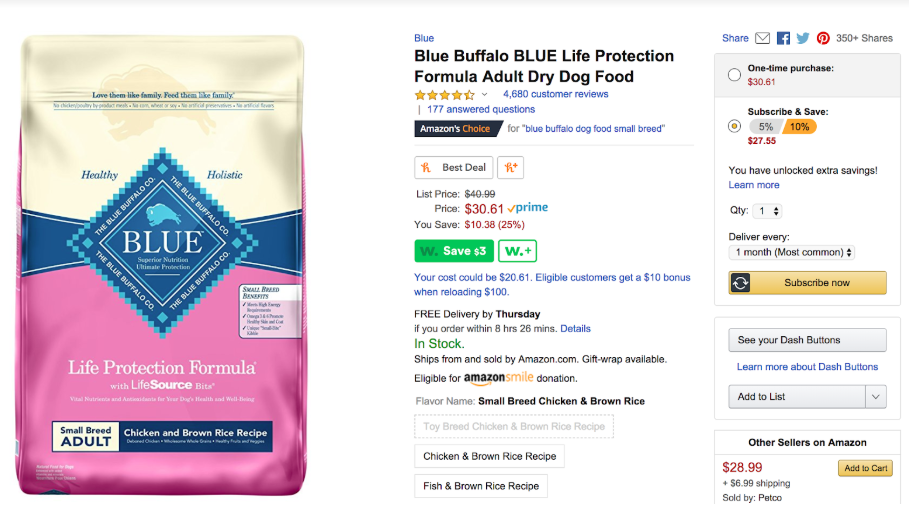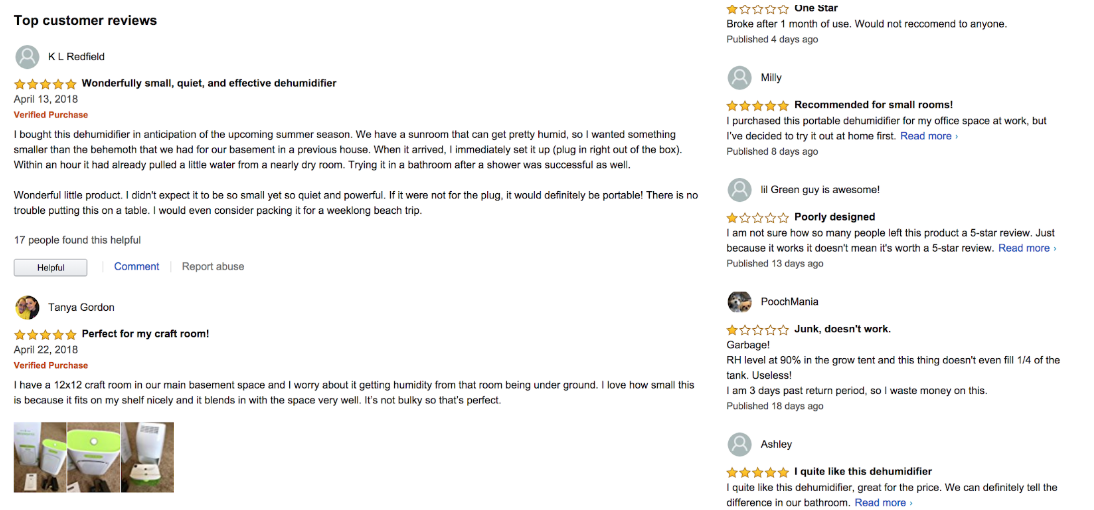
Most ecommerce businesses see Amazon as a fierce competitor—an ecommerce force that makes success harder for everyone else selling online. As easy as it is to see all the ways Amazon makes your life harder, you can learn a lot from the way they do business.
Amazon has tons of data on what people like and how people shop. Every move they make is based on years of experience with millions of customers—all of this information has been tracked and analyzed to determine how to offer the customer experience that will result in the most sales.
Smaller-scale ecommerce businesses will never have that kind of data to work with, but you don’t need it. Learn from the selling tactics Amazon has tried out and deemed successful. Here are seven useful ecommerce lessons worth learning from Amazon.
1. Proactively address pain points.
Many people love the convenience of ecommerce, but it comes with a unique set of pain points:
- Shipping costs are a top cause of cart abandonment.
- Slow shipping times cause impatience and can even stop sales from happening, particularly for time-sensitive holiday purchases.
- The checkout process, especially on sites that require users to create an account to make a purchase, can stymie impulse buys.
- A difficult returns process, or one that costs the customer money, can make the overall experience a negative one.
Amazon famously addresses the first two pain points with fast, free shipping for all Prime users and gives people plenty of reasons to have an account and stay signed into the site, like free music and movies for members. And while even Amazon can’t make the returns process totally painless, they do offer free return shipping on many types of items and allow people the option to make drop-offs at nearby Amazon lockers for convenience.
You probably can’t afford to offer all the perks that Amazon does to reduce these pain points, but you can look for ways to proactively address them. For shipping pains, that could mean:
- Offering free shipping for orders over a certain amount (which encourages people to spend more)
- Offering a flat rate for shipping that you advertise on the site so people know what to expect before the checkout process
- Promising that holiday orders placed by a certain time will arrive by the date they’re needed
To simplify the checkout process, you can offer a guest option that saves people the time required to create an account before checking out. But if you do so, go ahead and include a message encouraging them to create an account after their purchase as a way to save time later.
And for returns, consider offering free shipping or allowing people to drop returns off in-store, if your business has a physical location.
You probably can’t remove pain points completely, but you can find ways to make them a little less painful.
2. Use data to personalize the user experience.
Every time a logged in customer pulls up Amazon, they see a homepage that’s unique to them and filled with product recommendations based on their past purchase and browsing history.

If you’ve bought dog products in the past, the company knows to promote other dog products to you. If your wish list shows an interest in sci-fi novels, expect to see popular books from the genre promoted on your Amazon main page.
Amazon may have more data than most companies, but they don’t have a monopoly on the ability to provide customers with a personalized experience. If you can afford to invest in personalization tech, then you can deliver website landing pages that are personalized based on where the visitor is coming from or data on past behavior on your website.
If personalization software is outside of your budget, you can still personalize your email marketing using the information subscribers provided when they signed up and the data you have on past opens. And with retargeting, you can deliver targeted ads to past visitors based on what they checked out when last on your website.
3. Make recommendations.
A big part the personalized experience Amazon supplies is customized recommendations. The products they recommend are usually a mix of items visitors have viewed in the past, those they’ve put on a wish list, and those that people with a similar purchasing history have bought.

Personalized recommendations are a powerful tool used to let people know about products they’re likely to be interested in and may not have found on their own. And they’re something you can incorporate into your own marketing.
You can recommend items you know a visitor viewed in the past on your website, or suggest related items you know go well with a product they’re considering. For example, a business that sells wine and cheese could recommend items that make a good pairing together. Someone buying a new skirt may be interested in that matching top you also sell.
These types of personalized recommendations are genuinely useful and can improve the customer experience while making you new sales at the same time.
4. Provide a wish list or favorites feature.
A full 90% of customers spend time researching products before making the decision to buy. While you may get the occasional sale from an impulse buy, a lot of your customers will spend time browsing your website and considering their options before making any final decisions. When they see something they like, it pays to give them an easy way to make note of it so it’s easier to find when they come back.
Amazon provides a List feature that makes it easy for customers to create a list of items they want to remember to purchase later. In addition to helping people find old items they’ve already decided they like, it also gives friends and family members a handy list of products that make good gifts for birthdays and holidays.

Providing a wish list or favorites option for your customers can both increase your sales over time and provide you with more data to help with personalized marketing. When an item goes on sale that you know a past visitor is interested in, you can email them about the new price or feature the item on the website when they visit.
5. Provide a subscription option.
For types of products that people are likely to run out of and buy again later, Amazon often offers a “Subscribe and Save” option. By making a soft commitment to buy the product again in the future (customers can cancel in the interim if they change their mind), customers get a slight discount.
Somebody who needs to buy more dog food or shampoo every month can have the order automatically refilled for them, so they don’t have to make a point to remember it. And they get a discount for continuing to buy the product through Amazon each time.

If the products you sell are the kind of things people will want or need more of in a few weeks or months, then you can offer a similar program. Ask customers when they make a purchase if they want to sign up for repeat deliveries and offer a discount if they do. You can gain a repeat customer right away while offering them an attractive incentive to commit.
6. Include user reviews on your site.
For all the time you spend marketing your business, ultimately your customers are going to care less about what you have to say than what other customers think. 85% of customers trust online reviews as much as they do recommendations from friends and family.
Amazon makes it easy for customers to provide reviews and, as a result, many of the products on their website have hundreds of reviews that people can browse and read to learn more about a product before they buy.

You don’t even need to collect hundreds of reviews for them to do the trick. By making user reviews available on your website for all of your products, you give your customers a chance to communicate with each other and provide direct feedback to you on the products they buy. And you demonstrate that you’re trustworthy—allowing customers access to each other’s feedback proves you stand behind your products and have nothing to hide.
7. Create a member program.
One of the most notable things Amazon has done in their years as an ecommerce giant is develop the Prime member program. Millions of people pay for the privilege of being Prime members to access better shipping deals, movie and TV content, Amazon’s music library, and a growing number of additional benefits.
And while all those benefits cost Amazon, they also pay off. Prime members on average spend about double what non-Prime members do on the site.
Member programs reward customers for ongoing loyalty and engagement with a brand—and they work. When customers feel that they get something back for continuing to choose your brand over time, they’re that much more likely to stick with you. Starting a member program requires an investment, and you’ll have to figure out what rewards and details make the most sense for your brand to offer to customers, but it can solidify the connection you have to the customers that like you most, and are therefore the most valuable to your business.
Amazon may have more money to spend than your average ecommerce business, but that doesn’t mean you can’t implement some of the strategies that have helped make them successful. Take the tactics they’ve launched on a large scale and figure out how to make them work for your business and audience with the budget and data you have.
Have any additional Amazon questions? Let us know in the comments!











